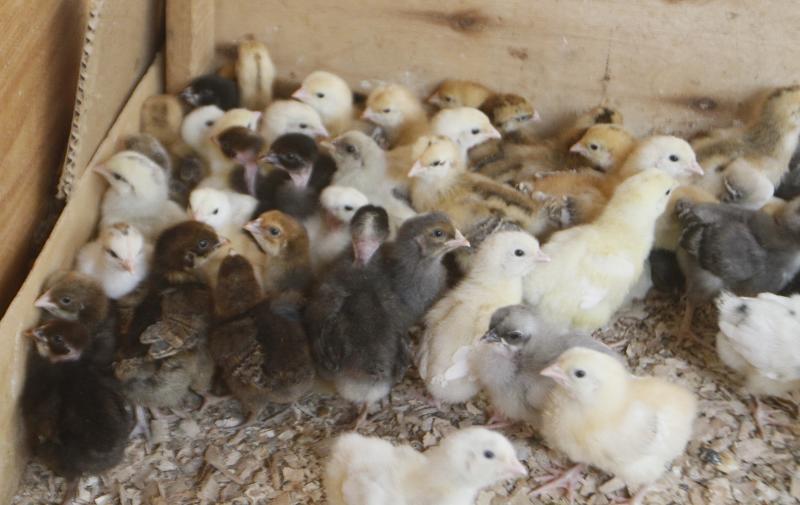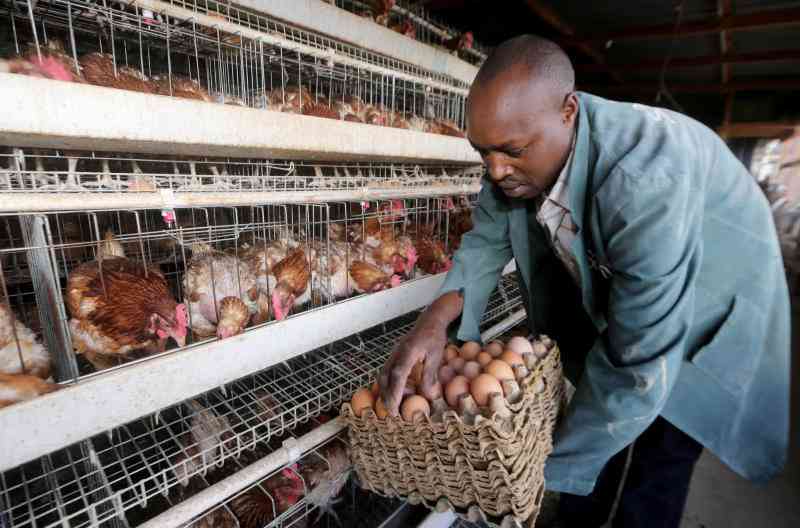
Poultry production is expanding fast globally and Kenya has not been left behind. I have witnessed entry of new hatcheries in the last five years with a majority producing improved ‘kienyeji’ chicks of day-old and supplying farmers throughout the countryside. Here are eight steps any entrepreneur needs to ensure the hatcheries are hygienically safe to produce quality day-old chicks to compete favourably with any in a global rating.
1. Select clean fertile eggs
Finding clean fertile eggs is the most important criteria for keeping your incubators clean. Remove and discard eggs unsuitable for hatching. These are dirty, cracked, small (According to Hatchery Policy, acceptable weight should be in the range of 48-52g), very large or double yolk, poor shells - but any shell colour should be acceptable for hatching and grossly misshaped.
2. Nest hygiene at farm level
Contamination of eggs by Aspergillus commonly occurs on the breeder farm due to contaminated nest boxes/material. When the egg is laid; it is hot and wet. The wetness means that dirty litter may adhere to the shell. The egg rapidly cools and during this time the shell contracts, drawing in infection from the surrounding area. Most infection of the egg by Aspergillus and many other organisms, happens here. Spray nest boxes and new material with Triazolol spray in a proportion of 1-part Triazolol spray to 49 parts water. Triazolol can be used in conjunction with Paraformaldehyde Prills to enable control of most infections caused by contaminated nest boxes.
3. Single-stage vs multistage incubator
Single stage incubator simply means all eggs are set at same time and are all hatched exactly after 21 days unlike in multistage where eggs are of different ages in the incubator. In the former system, it is easier to remove all the setter trays and racks for thorough cleaning and disinfection before a new batch of eggs are introduced. In doing so, the incubators are kept clean and sanitized much easily compared to multi-stage system.
4. Separate setter incubator from Hatcher
I have witnessed most small-scale producers preferring a setter cum hatcher incubator where eggs and chicks share the same conditions. This system greatly contributes to heavy contamination of unhatched eggs. It should be discouraged at all. Ensure your setter incubator is physically separated from the hatcher and eggs are transferred at day 18 (for chickens) just before they start to pip out.
5. Egg storage and handling pre-incubation
The environment of storage should be cleaned and disinfected on daily basis and most preferably after every activity that involves egg handling, movement and storage. The storage room should be made of smooth washable surface and eggs kept above the daily on plastic pallets that are washable. The eggs must have been stored at temperatures of 16-18 degrees centigrade, physically clean, well formed with uniform colour, no crack and oval shaped. The eggs must be stored with their broad side up and pointed side facing down in a clean and disinfected environment.
6. Ideal disinfectant should have the following characteristic
A safe and environment friendly disinfectant that does not produce toxic chemical residues, strong and long term effectiveness against all harmful microorganisms such as viruses, bacteria and fungi. No side effects to workers and eggs or chicks in the hatchery and should be effective in very small doses. Most QAC and Glutaraldehyde disinfectants fall in this category.
7. Chicks takeoffs and handling
All the staff handling chicks must be physically clean and provided with clean uniforms and boots. They must undergo medical checks at least twice per year and must not be handling chicks if they are unwell. Chicks should be packed properly in ventilated boxes and moved to farms within 12 hours of hatching.
8. Hatchery biosecurity
Appropriate cleaning after each cycle for full removal of all organic materials on the floors and all equipment in the hatchery and followed by periodic disinfection. The hatchery should be completely fenced off to prevent wild animals and birds from accessing hatch debris. Visitation should be limited to essential people only and pest and rodent control should be enforced.
The writer is head vet at Kenchic
[For more information contact, [email protected]]
Want to get latest farming tips and videos?
Join Us
 The Standard Group Plc is a multi-media organization
with investments in media platforms spanning newspaper print operations,
television, radio broadcasting, digital and online services. The Standard Group
is recognized as a leading multi-media house in Kenya with a key influence in
matters of national and international interest.
The Standard Group Plc is a multi-media organization
with investments in media platforms spanning newspaper print operations,
television, radio broadcasting, digital and online services. The Standard Group
is recognized as a leading multi-media house in Kenya with a key influence in
matters of national and international interest.
 The Standard Group Plc is a multi-media organization
with investments in media platforms spanning newspaper print operations,
television, radio broadcasting, digital and online services. The Standard Group
is recognized as a leading multi-media house in Kenya with a key influence in
matters of national and international interest.
The Standard Group Plc is a multi-media organization
with investments in media platforms spanning newspaper print operations,
television, radio broadcasting, digital and online services. The Standard Group
is recognized as a leading multi-media house in Kenya with a key influence in
matters of national and international interest.








